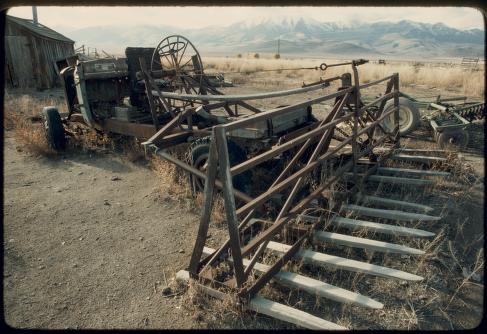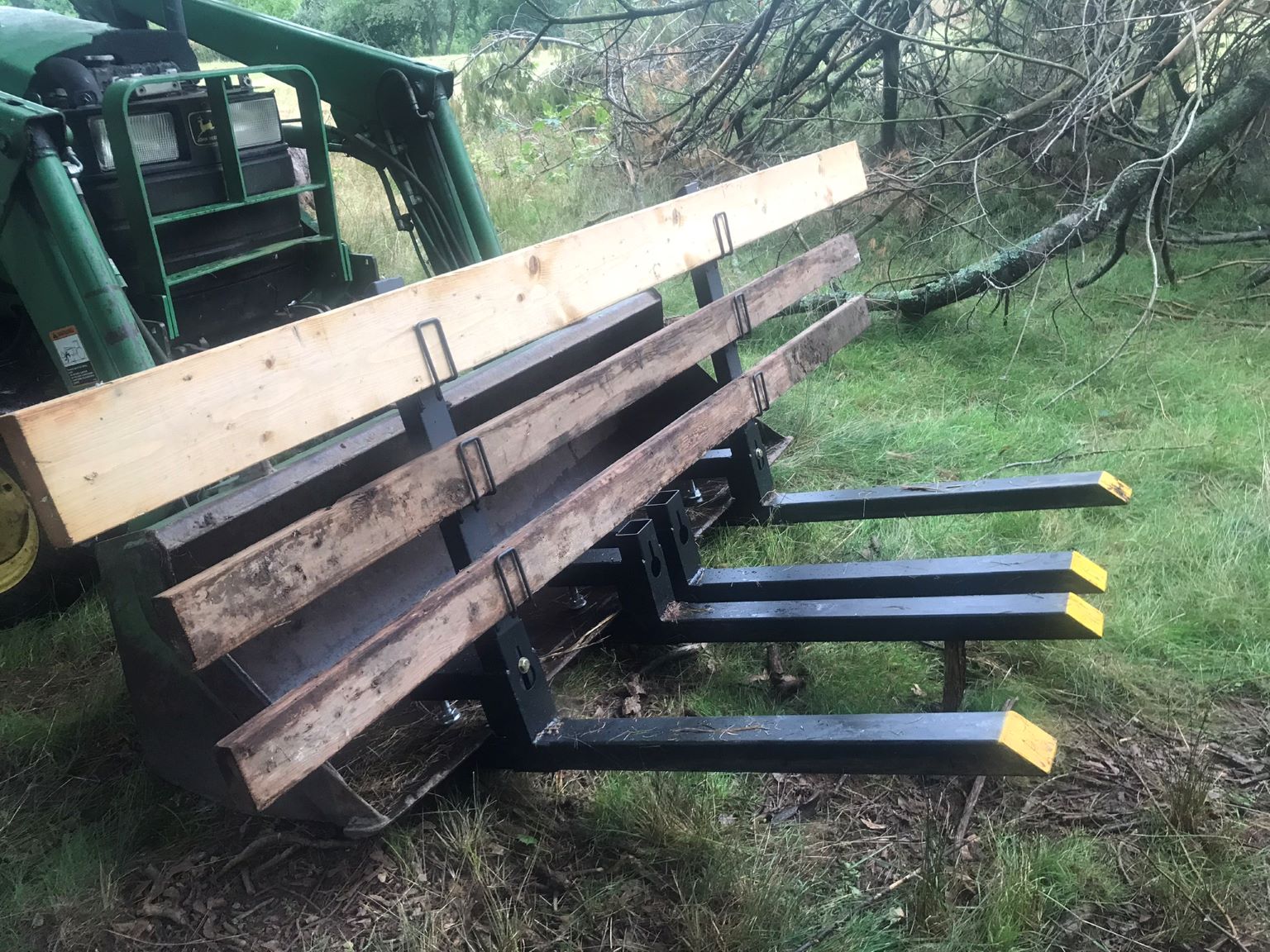Reinventing the Buck Rake
August 25, 2023
We’re getting pretty good at this! Once we cut the hay with our newly modified Brush Hog – (which we renamed the Hay Hog), we leave the hay in the field for a day to dry. After that, we rake it into windrows with our brand-new hay rake. Raking the hay fluffs it up and allows it to thoroughly dry before we store it in the barn. The neatly gathered windrows also make the hay much easier to collect. Today in the U.S., the vast majority of farmers purchase hay from someone else. The hay farmers run their balers down the windrows and spit out perfectly uniform and easily transportable bales as they go. What’s the sport in that?
Not wanting to spend $30,000 on a baler and a bigger tractor, we decided we’d collect the loose hay by hand. Hand collecting involves either starting at the beginning of the windrow with a pitchfork and pushing the hay in one massive wad to the hay wagon - or driving the hay wagon along the rows and pitching hay up into it as we go.
The invention of the “Buck Rake” in the late 1800’s mechanized the collection of all that loose hay. Horse drawn buck rakes were made using a dozen or more saplings lashed together between a team of horses. The spear shaped saplings skimmed over the ground picking up loose hay as it went and pushing it all to the barn.
By the 1940’s, a lot of buck rakes were mounted onto old cars. Most cars and tractors were rear wheel drive, so it was easier to push the load while driving in reverse. Just the thought of driving in reverse all day makes my neck stiff. Presumably I’m not the only one, as some farmers went to the effort of relocating the steering wheel to the back of the car so they could face forward, while driving in reverse.
We contemplated lashing either steel pipes, saplings, or 2x4s to the front of our tractor (and hoped no-one driving down RT4 would notice). In the end though, we came up with a much more dignified design. We mounted 2 pairs of steel forklifts onto the bucket of our tractor and fashioned a “sled and backer board” out of 2x4s and plywood. It’s a 21st century rendition of a 19th century invention. Now instead of using a pitchfork, and moving the hay by hand, we can use our tractor mounted buck rake to gather all the hay and push it effortlessly to the hay wagon. It actually works so well it kind of feels like cheating.
Our next big hurdle will be making Hill-Stead’s Horse Barn safe enough for storing the hay. We hired a structural engineer to evaluate the structure of the barn. It needs work! There is a fractured beam that is on the verge of failing completely. It’s 40 feet in the air which complicates things a bit. The beam needs to be repaired before the first real snow which gives a couple more months to figure it out, though I know tomorrow’s problem will be here soon enough.
Meanwhile, we’ve ordered the rough sawn timbers we need and should have our “Mow” (rhymes with cow) ready for our inaugural cutting in a couple of weeks. All the hay we’ve made so far has been for the museum’s benefit. We created four different haystacks and with each one we learned and improved. The end goal, though, has always been to put up an ample supply of hay stored inside the barn for our sheep’s winter feed. It’s been both a sprint and a marathon to figure this all out, but I can finally see victory on the horizon – in fact, it’s just a few dozen windrows away!



